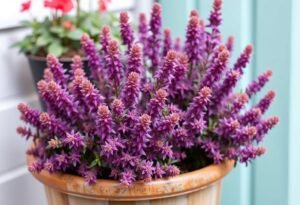Popular Varieties of Hydrangeas
Hydrangeas come in various species, each with its unique beauty and characteristics. The most common types include mophead hydrangeas, panicle hydrangeas, and smooth hydrangeas. Each of these varieties has its blooming timelines, which is crucial when planning your garden layout. Typically, mophead hydrangeas bloom in the summer months, between June and July, whereas panicle hydrangeas often start their show later, extending their bloom time from July to September. Familiarize yourself with the different types to select those that will best complement your home’s landscape.
Factors Affecting Hydrangea Blooming
The blooming period of hydrangeas can vary based on numerous factors, including weather conditions, soil quality, and care methods. These incredible flowers generally begin to bloom in spring; however, to ensure a vibrant display, proper preparation is essential. Adequate watering, fertilization, and sunlight exposure can greatly influence whether your hydrangeas bloom splendidly.
How to Care for Hydrangeas Before Blooming
Caring for hydrangeas in the pre-bloom phase is vital for achieving breathtaking results. Regular watering, pruning, and fertilizing should be part of your gardening routine. Understanding when hydrangeas bloom enables you to prepare early in spring for a stunning display of flowers come summer.
Optimal Growing Conditions
Hydrangeas thrive best in locations that receive partial shade or full sun. Extreme direct sunlight can lead to dehydration. The soil should be rich, loamy, and well-draining. Creating optimal conditions will guarantee glorious blooms of hydrangeas, attracting numerous pollinators to your garden.
Common Problems During Blooming
Like any plants, hydrangeas can face various challenges. Common issues include insufficient watering, nutrient deficiencies, and fungal diseases. It’s essential to regularly monitor their condition and address any troubling signs. If understanding when hydrangeas bloom poses challenges, consulting an expert in gardening can provide invaluable assistance.
Fun Facts About Hydrangeas
Not only do hydrangeas capture our hearts with their beauty, but they also possess fascinating properties. Depending on the pH level of the soil, the color of their blooms can change. Acidic soil results in blue flowers, while alkaline conditions yield pink. This incredible phenomenon allows you to tailor your garden’s appearance by adjusting how you care for your hydrangeas.
Conclusion
When considering when hydrangeas bloom, grasping the timing is crucial for their care and overall garden aesthetic. With the right knowledge, diligent care, and the ideal growing conditions, you can relish the beauty of these marvelous flowers throughout the summer. Don’t wait—put your plan into action now and ensure that hydrangeas grace your garden space with their colorful presence!
Disclaimer
This article provides information and should not be considered professional gardening advice. For specific concerns, consult a gardening expert.

















